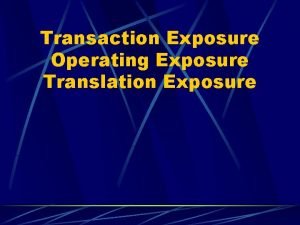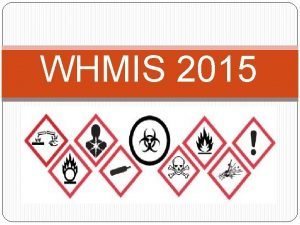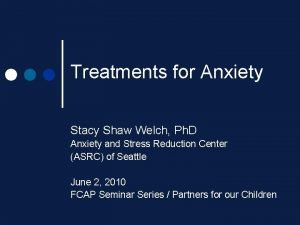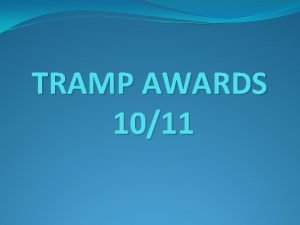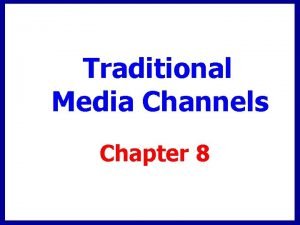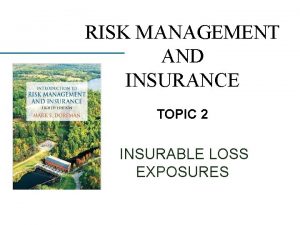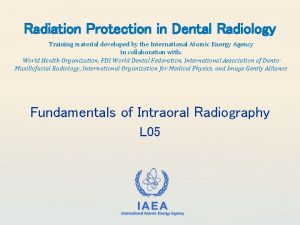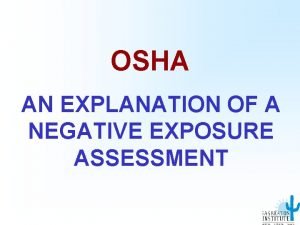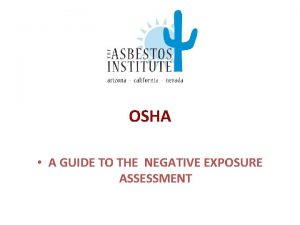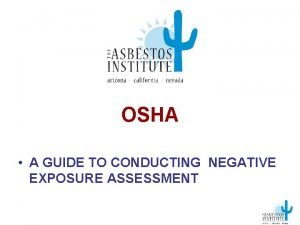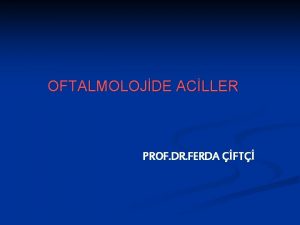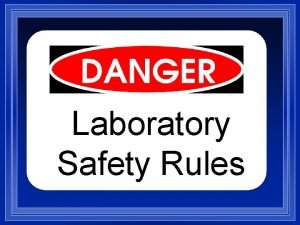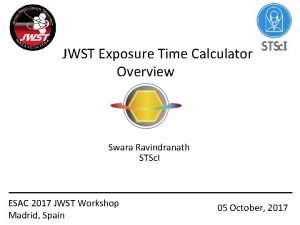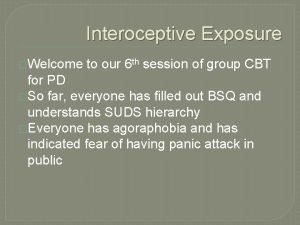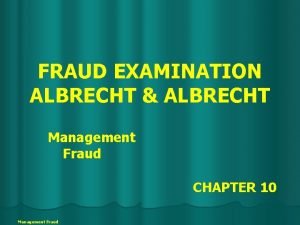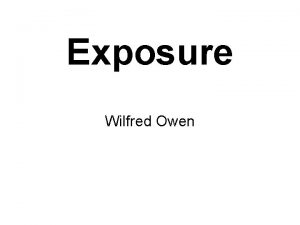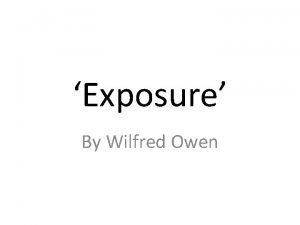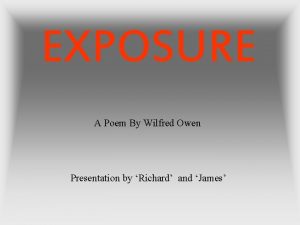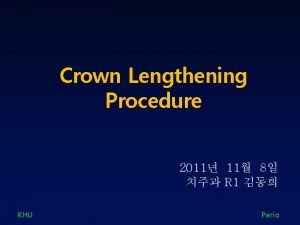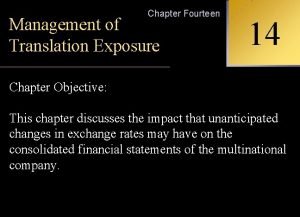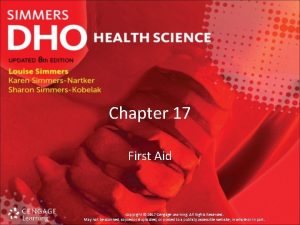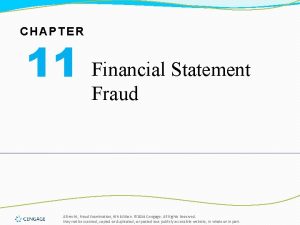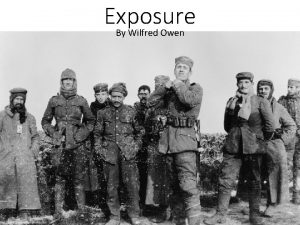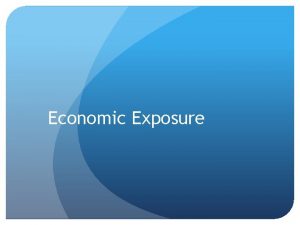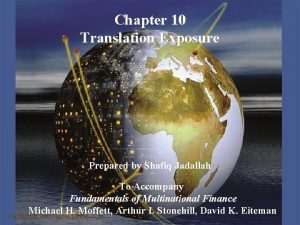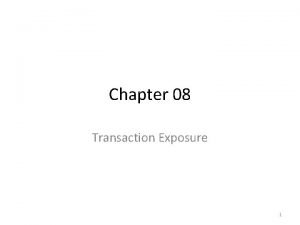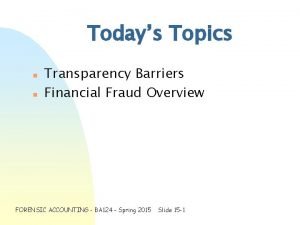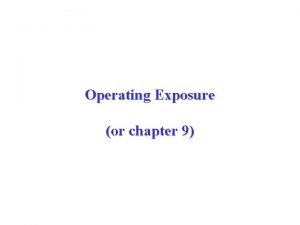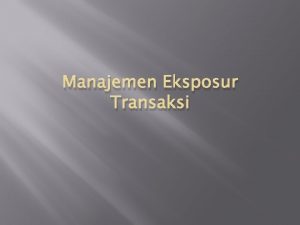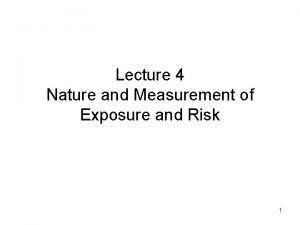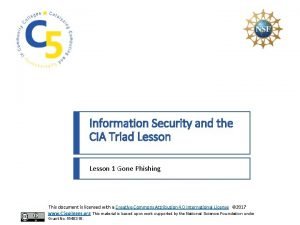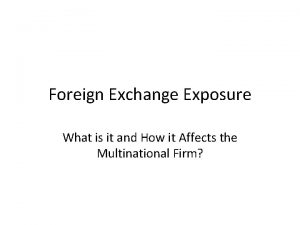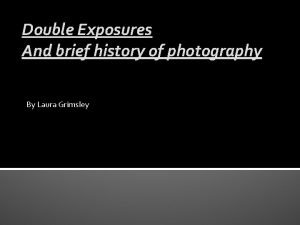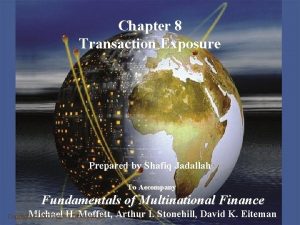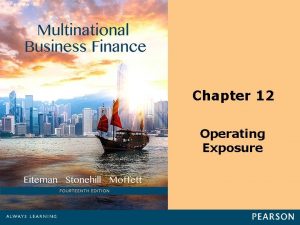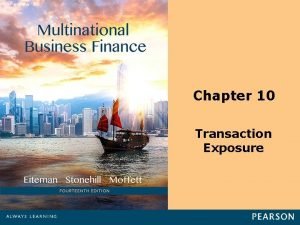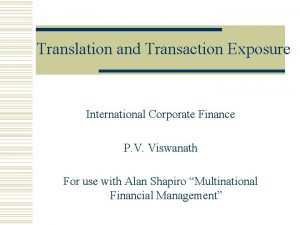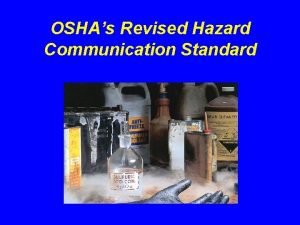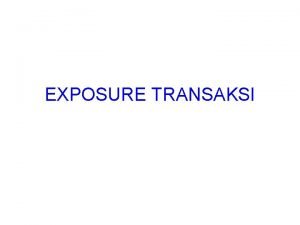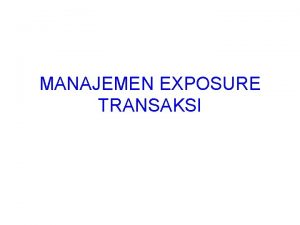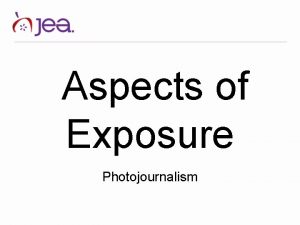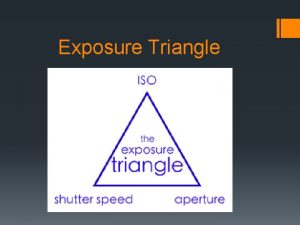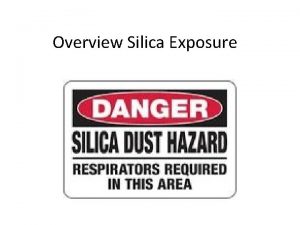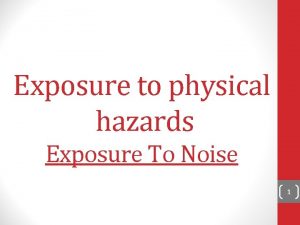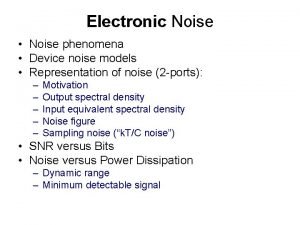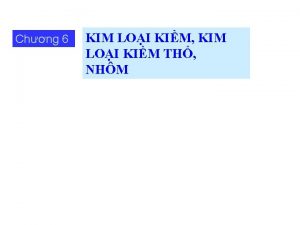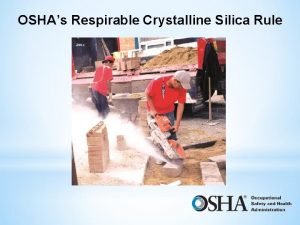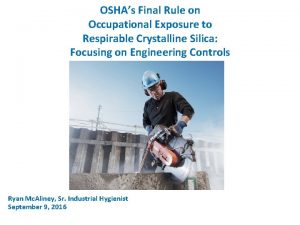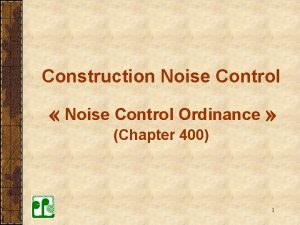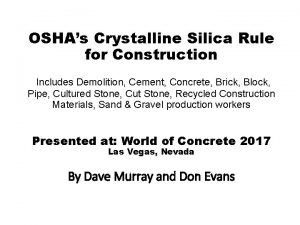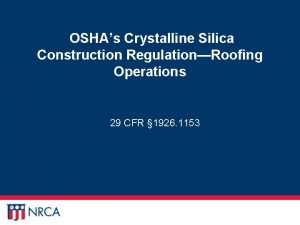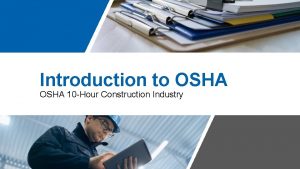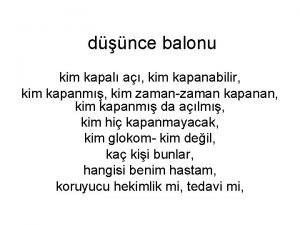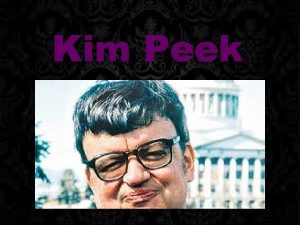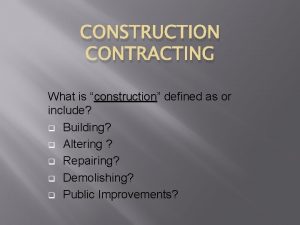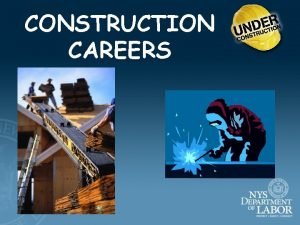OSHAs Approach to Noise Exposure in Construction Kim



































































- Slides: 67

OSHA’s Approach to Noise Exposure in Construction Kim Nipko, OSHA Madison Charlie Shields, OSHA Aurora 2003

Objectives • Provide technical information on construction noise and hearing conservation • Explain current expectations • Review 8/5/2002 OSHA Hearing Conservation for Construction Workers Advance Notice of Proposed Rulemaking • Sell you on this program so you can sell to management and employees

Presentation Outline • Construction Noise Levels • Noise-Induced Hearing Loss • Prevention – – Noise Measurements Hearing Protectors Audiometric Testing Noise Control • Current and Future OSHA Standards • Benefits of Hearing Conservation Programs

Construction Noise Levels

Current OSHA Standards • 1926. 52 Occupational Noise Exposure – TABLE D-2 - PERMISSIBLE NOISE EXPOSURES | Sound Level d. BA slow response 8. . . . …………. . | 90 6. . . . …………. . | 92 4. . . . …………. . | 95 3. . . . …………. . | 97 2. . . . …………. . | 100 1 1/2. . . . ………… | 102 1. . . . …………. . | 105 1/2. . . . …………. | 110 1/4 or less. . . . . ………………… | 115 Duration per day, hours

Sound Pressure Level • Pressure wave traveling in air or water • Expressed in decibels (d. B) – It is the perceived loudness • Analogy: surface wave made when you throw a stone into a calm pool of water

Sound Pressure Level • Logarithmic scale • Small d. B increase represents large increase in sound energy. • 3 d. B increase is a doubling of sound energy • 10 d. B increase represents a 10 -fold increase • 20 d. B increase represents a 100 -fold increase

Task/Tool Noise Levels for Common Tools Mortising Orb. Sand. Table Saw Planer Belt Sander Router Metal Shear Hand Drill Circular Saw Tile Saw Impact Wrench Miter Saw Chop Saw Chain Saw Hammer Drill 75 80 85 90 95 100 105 110 115 Source: NIOSH

Construction Noise Levels Pneumatic chip hammer Jackhammer Concrete joint cutter Skilsaw Stud welder Bulldozer Earth Tamper 103 -113 102 -111 99 -102 88 -102 101 93 -96 90 -96 Crane Hammer Gradeall Front-end loader Backhoe Garbage disposal (at 3 ft. ) Vacuum cleaner 90 -96 87 -95 87 -94 86 -94 84 -93 80 70 Source: Center To Protect Worker’s Rights

Source: Construction Safety Association of Ontario

Source: Construction Safety Association of Ontario

Average Daily Noise Exposure Levels (8 -hour TWA) of Heavy Equipment and Associated Laborers (adapted from Legris and Poulin, 1998) Operator and Task Heavy-duty bulldozer Vibrating road roller Light-duty bulldozer Range in d. BA 97 -107 91 -104 93 -101 Asphalt road roller Laborers Crawler crane < 35 ton (non-insulated cab) 85 -103 78 -107 93 -101 Crawler crane >35 ton (non-insulated cab) Crawler crane >35 ton (insulated cab) Rubber-tired crane >35 ton (non-insulated cab) Rubber-tired crane >35 ton (insulated cab) Tower Crane 90 -98 80 -89 78 -90 59 -87 70 -76

Source: NIOSH

Presumed Noise Levels British Columbia Standard • Presumes specific construction occupations are routinely overexposed to noise – Carpenters - Sandblasters – Plumber pipefitters - Drillers – Sprinkler installers - Electricians – Mobile equipment oprs - Steel erectors – Welders/fabricators – Concrete workers (pumps, vibrators, jackhammers) – Drywallers shooting tracks or boarding

OSHA Inspection Data • Chipping Concrete Floor 96 d. BA (TWA) at 4. 5 hours Source: OSHA Madison case file

OSHA Inspection Data • Abrasive Blasting with Sponge-Jet Material 105 d. BA (TWA) at 6 hours (3. 5 X PEL for silica) Source: OSHA Madison case file

OSHA Inspection Data • Vermeer Saw Operator 95 d. BA (7 hour sample) Source: OSHA Aurora case file

OSHA Inspection Data • Jackhammering - 102 d. BA (7. 5 hour sample) Source: OSHA Aurora case file

OSHA Inspection Data • Bobcat Operator Breaking Pavement 112 d. BA (7 hour sample) Source: OSHA Aurora case file

OSHA Inspection Data • Lateral Drilling - 97 d. BA (6. 5 hour sample) Source: OSHA Aurora case file

OSHA Inspection Data • Lateral Drilling - 104 d. BA (7 hour sample) Source: OSHA Chicago North case file

OSHA Inspection Data • Partner Saw - 98 d. BA (7 hour sample) Source: OSHA Aurora case file

OSHA Inspection Data • 36” Wall Saw - 100 d. BA (4. 5 hour sample) Source: OSHA Aurora case file

OSHA Inspection Data • Tuckpoint Grinding - 99 d. BA (2. 5 hour sample) Source: OSHA Chicago North case file

OSHA Inspection Data • Sandblasting – 125 d. BA (4 hour sample) Inside hood – 109 d. BA Source: OSHA Aurora case file

High Noise Exposures Rules of Thumb • Above 90 d. BA when you have to raise your voice to be heard standing next to a person • Need protection: – When using electric, gasoline, or air powered tools – When sitting in an open cab of dozers, rollers, some cranes, earth moving or road building equipment

Noise-Induced Hearing Loss NIHL

Brief Overview – How Ears Work • A-weighted response simulates the sensitivity of the human ear at moderated levels .

How Does Excessive Noise Damage Your Ears? • Microscopic hair cells of the cochlea are exposed to intense noise over time • Hair cells become fatigued and less responsive, losing their ability to recover. • Damage becomes permanent resulting in noise-induced permanent threshold shift.

Risk of Hearing Loss • Estimated Risk of Incurring Material Hearing Impairment as a Function of Average Daily Noise Exposure Over a 40 -year Working Lifetime (source: NIOSH) • Average Exposure 90 d. BA 85 d. BA 80 d. BA 29% 15% 3%

Audiometric Testing

What Is The Purpose of Having a Hearing Test on a Regular Basis? • An audiometric testing program is used to track your ability to hear over time. – Baseline and annual • Test records provide the only data that can be used to determine whether the program is preventing noise-induced permanent threshold shifts. It is an integral part of the hearing conservation program.

Case Study 1. Teenage Girl From the American Academy of Family Physicians website, Rabinowitz article FIGURE 1. Audiogram findings in the patient in case 1. The area below the curves represents sound levels that the patient could still hear. (X = left ear; O = right ear)

Case Study 1 Conclusion • “Temporary threshold shift“ example • Common in persons exposed to high noise • Represents transient hair cell dysfunction • Complete recovery can occur • Repeated episodes of such shifts causes permanent threshold shifts because hair cells in the cochlea are progressively lost.

Case Study 2 Factory Worker Age 55 From the American Academy of Family Physicians website, Rabinowitz article FIGURE 2. Audiogram findings in the patient in case 2. The area below the curves represents sound levels that the patient could still hear. (X = left ear; O = right ear)

Case Study 2 Conclusion • Noise Induced Hearing Loss – – Speech discrimination and social function interference Difficulty in perceiving and differentiating consonant sounds Words "run together" Sounds such as a baby crying or a distant telephone ringing, may not be heard at all. • Tinnitus – Common symptom of noise overexposure – Further interferes with hearing acuity, sleep and concentration. • These impairments have been associated with social isolation, depression and an increased risk of accidents.

Carpenter Hearing Losses by Age Source: NIOSH

Audiometric Test Services • Mobile Testing Services • Fixed Site (Occ Health Clinics, Hospitals) – Make sure they have a booth or partitioned area, not a noisy room! • How To Find

Noise Measurements

Noise Measurements • Sound level meters – A device that measures the intensity at a given moment – Spot check

Noise Measurements • Noise dosimeters – A dosimeter is like a sound level meter except that it stores sound level measurements and integrates the measurements over time, providing an average noise exposure reading for a given period of time, such as an 8 -hour workday.

Hearing Protection

Hearing Protection • • • Ear Plugs Ear Muffs Dual protection Active noise cancellation Amplification devices NRR calculations

What Hearing Protective Devices Will Work Best? Type Advantages Disadvantages Formable Ear Plugs (foam) -Cooler, more comfortable under hot conditions -Can readily dispose of after each use -Lightweight -Irritation to outer ear (for some people) -Sometimes fit problems Reusable Ear Plugs (plastic) -Cooler, more comfortable under hot conditions -Can be reused if cleaned properly -Lightweight -Irritation to outer ear (for some people) -Sometimes fit problems Ear Muffs -Easy to use no fit problems -Not as effective if anything (even glasses) breaks the seal -Heavier/Warmer than plugs

Noise Reduction Rating • A hearing protector's ability to reduce noise is its Noise Reduction Rating (NRR). • The greater the NRR, the better the noise attenuation. • The NRR is usually listed on the hearing protector box.

Noise Reduction Rating Calculation – For A-weighted readings don’t simply subtract NRR from exposure level 1910. 95 Appendix B – (d. BA - (NRR-7 d. B)) • Example (plugs or muffs): TWA = 109 d. BA, NRR= 29 109 - (29 -7) = 109 d. BA – 22 d. B= 87 d. BA • Suggest you shoot for 80 d. BA as a protection factor for poor fit/use

NIOSH NRR Calculation http: //www. cdc. gov/niosh/98 -126 f. html • Earmuffs - Subtract 25% from the mfr's NRR • Formable earplugs - Subtract 50% from the mfr’s NRR • All other earplugs - Subtract 70% from the mfr’s NRR • Formula Noise level = d. BA – (derated NRR – 7)

Dual Protection • Using plugs and muffs simultaneously • Actual attenuation depends on many factors • Reduction is not near what you would expect • NRR calculation: – Take the higher NRR and add 5 to the field adjusted NRR

Active Protection • May help but not recognized by OSHA in NRR calculations • Active headphones use destructive interference to cancel low-frequency noise while still allowing the wearer to hear mid- and high-frequency sounds such as conversation and warning sirens. • Used extensively by pilots, active headphones are considered indispensable in helicopters and noisy propeller-driven aircraft.

Hearing Protection: Problems • Undue reliance on protection without steps to reduce noise exposure at source • Poor choice of protector • Incorrect fitting • Inadequate maintenance • Inconsistent use negates most of the protective effect

Noise Control

Noise Controls for Construction Equipment (Schneider et al. , 1995) Equipment Pile Driver Stone saw cutting Handheld impact drills Circular saw blades Noise Controls Enclosure, muffler Noise control pad with water Reduction of reflected sound 15º tooth angle, new tooth configuration, slotted saw blades, viscoelastic damping Pneumatic tools Pavement breaker/ Rock drill Portable air compressor Muffler, enclosure of cylinder case and front head, moil damping Muffler, acoustic enclosures

Noise Controls for Construction Equipment (Schneider et al. , 1995) (continued) Equipment Bulldozer Noise Controls Cab-liner material, enclosure, sound absorption in canopy, sealing of all openings Wheeled loader Vibratory roller Absorption of sound cooling air route Flexible mounting for pump compartment Joint Cutter Anti-vibration mounting fixtures

Noise Control • Replace worn, loose, or unbalanced machine parts that cause vibration. • Keep machine parts well lubricated to reduce friction. • Acoustical enclosures and barriers around generators • Sound absorbing material and vibration isolation systems on hand tools • Quiet work practices - use rubber mallets to erect and dismantle formwork.

Current/Proposed OSHA Hearing Conservation Standards

Current Expectations • 1926. 52(d)(1) Implement hearing conservation programs for employees exposed to 90 d. BA average and above • Audiograms – – Season long employees Long term year after year employees One year mobile testing van exception per 1910. 95(g)(5)(ii) Don’t forget exposed shop employees • Training • 1926. 101 Hearing Protection

Proposed Standard • Apply general industry standard to construction, 85 d. BA average and above – Monitoring – Audiograms – Hearing Protection – Training – Recordkeeping • Modifications proposed by the public under the rulemaking process

Benefits of a Hearing Conservation Program

Worker’s Compensation Claim Statistics in Wisconsin - 2000 Loss of Hearing Hernia • 725 claims • 1, 267 claims • Lost wage compensation $4, 855, 750 • Lost wage compensation $2, 292, 408

Worker’s Compensation Claim Statistics in Wisconsin - 2001 Loss of Hearing Hernia • 696 claims • 1, 179 claims • Lost wage compensation $5, 727, 122 • Lost wage compensation $2, 270, 330

Hearing Loss Affects Safety Program • Workers with NIHL may not hear audible warnings and safety signals. • Hearing impairment jeopardizes not only affected employees but others who work with them. • NIHL may interfere with daily life, especially during social activities in noisy settings. • High incidence of fatalities from being struck by objects, transportation incidents, and frequency of fatal accidents from moving machines—especially pedestrians. • Break down in communication

Hearing Loss Affects Safety Program • Increased effort to listen may lead to fatigue, anxiety, and stress. • Those affected may feel increasingly isolated from family and friends. • Some people with NIHL also suffer from tinnitus, causing them to hear ringing, buzzing, rushing, whistling, or hissing when there are in fact no sounds to be heard.

Contractor Comments Hearing Conservation Programs • “Audiogram cost was minimal” • “Cost is the easy part. ” • “Was not hard to do except the time to do dosimetry” • “Insurance companies will often do monitoring” • “Program was easily accomplished using a safety consultant”

Contractor Comments (continued) • “Transient workforce is an issue” • “Not a big problem to get employees to use hearing protectors. Machine operators are good about it, others maybe not so good. ” • “Have got to sell the program and get buyin”

Contractor Comments (continued) • Some of the unions could step up to the plate and offer audiograms as a service to contractors. ” • “It would be good to have an audiogram card for workers to carry from job to job. Having a guy get 4 -5 audiograms a year will make him mad and discredit the program. ”

What You Can Do Now • • • Monitoring Equipment noise labels Purchase equipment with noise in mind Sell employees on hearing protector use Audiometric testing program

Contact Information • Kim Nipko 608 -441 -5388 kim. nipko@osha. gov • Charlie Shields 630 -896 -8700 charlie. shields@osha. gov http: //www. osha. gov/SLTC/constructionnoise/index. html Extensive use of NIOSH, The Center To Protect Workers Rights, and the Construction Safety Association of Ontario materials was made. We thank those organizations for the use of their information in the advancement of hearing conservation.
 Managing economic exposure and translation exposure
Managing economic exposure and translation exposure Operating exposure
Operating exposure Managing economic exposure and translation exposure
Managing economic exposure and translation exposure Managing economic exposure and translation exposure
Managing economic exposure and translation exposure Noise
Noise Virtual circuit and datagram
Virtual circuit and datagram Theoretical models of counseling
Theoretical models of counseling Waterfall and shower approach
Waterfall and shower approach Multiple approach avoidance
Multiple approach avoidance Bandura's reciprocal determinism
Bandura's reciprocal determinism Definition of research approach
Definition of research approach Traditional approach to systems implementation
Traditional approach to systems implementation Deep learning approach and surface learning approach
Deep learning approach and surface learning approach What does the acronym whmis stand for
What does the acronym whmis stand for Risk exposure index
Risk exposure index Unit 15:6 providing first aid for burns
Unit 15:6 providing first aid for burns Interoceptive exposure
Interoceptive exposure Slut exposure template
Slut exposure template Traditional media channel
Traditional media channel Apa yang dimaksud dengan stel = short term exposure limit?
Apa yang dimaksud dengan stel = short term exposure limit? Social psychology definition
Social psychology definition Ideally insurable risk
Ideally insurable risk Common causes of faulty radiographs
Common causes of faulty radiographs Exposure therapy irvine
Exposure therapy irvine Exposure therapy irvine
Exposure therapy irvine Exposure sheet animation
Exposure sheet animation Exposure brush photoshop
Exposure brush photoshop Negative exposure assessment
Negative exposure assessment Negative exposure assessment
Negative exposure assessment Negative exposure assessment
Negative exposure assessment Dakrioadenit
Dakrioadenit Short exposure can cause death
Short exposure can cause death Jwst etc
Jwst etc Interoceptive exposure
Interoceptive exposure Double exposure artifact
Double exposure artifact Fraud exposure rectangle
Fraud exposure rectangle Personification in exposure
Personification in exposure Mad gusts tugging on the wire
Mad gusts tugging on the wire Exposure annotated
Exposure annotated Wilfred owen poems exposure
Wilfred owen poems exposure Data exposure via rest api
Data exposure via rest api Anatomical crown exposure
Anatomical crown exposure Translation exposure
Translation exposure Exposure to comprehension
Exposure to comprehension 17:8 providing first aid for cold exposure
17:8 providing first aid for cold exposure Chapter 17:12 applying dressings and bandages
Chapter 17:12 applying dressings and bandages Fraud exposure rectangle
Fraud exposure rectangle Rupture exposure radius
Rupture exposure radius Exposure draft adalah
Exposure draft adalah Disinfectants used in salons must be milady
Disinfectants used in salons must be milady Exposure rhyme scheme
Exposure rhyme scheme Measuring and managing economic exposure
Measuring and managing economic exposure Balance sheet hedge translation exposure
Balance sheet hedge translation exposure Example of transaction exposure
Example of transaction exposure Exposure control plan bloodborne pathogens
Exposure control plan bloodborne pathogens Ncffr
Ncffr Managing operating exposure
Managing operating exposure Eksposur transaksi
Eksposur transaksi Nature of exposure and risk
Nature of exposure and risk How do fake social media accounts breach the cia triad
How do fake social media accounts breach the cia triad Foreign exchange exposures
Foreign exchange exposures History of double exposure photography
History of double exposure photography Non-marketer dominated stimuli
Non-marketer dominated stimuli Transaction exposure คือ
Transaction exposure คือ What is the objective of managing operating exposure
What is the objective of managing operating exposure Exposure
Exposure Biological exposure indices definition
Biological exposure indices definition Translation risk
Translation risk

